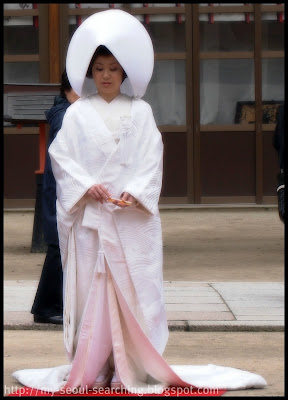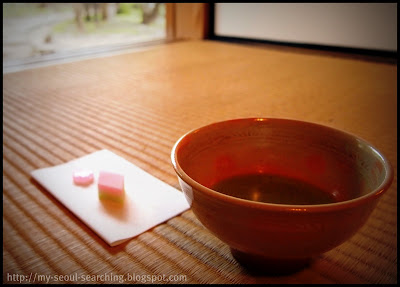With only a few days left before my new job in Korea started, I was made aware that I would not be able to obtain my E2 teaching visa at the Korean consulate in Vietnam. I was told that I would have to hop a plane to Fukuoka, Japan as soon as possible so I could start work on time. I was already in the middle of preparing for my final tests and teaching practices to obtain my TESOL certificate so my nerves were shot. I did everything I needed to do and was allowed by my instructors to leave the course a day early. I managed to find the time to say quick goodbyes to friends made in Vietnam and finish packing just an hour or so before I needed to be at the airport.
Upon check in, I was told by Korean Air that my luggage was overweight and that I needed to cough up $600 or else get rid of it. I was shocked, considering my flight cost about the same amount. Embarrassed and upset, I pulled item after item out of my suitcases and threw them off to the side of the counter. My blood really started boiling when women nearby giggled as they waited for me to finish, eager to find what new things they would be taking home. I still ended up paying an additional $250 as I wasn’t able to throw everything away. You can imagine how I felt by the time I got on the plane.
After arriving in Fukuoka, I was forced to rush to the Korean consulate to drop off my application for my visa. The office had just closed for lunch so I deliriously wandered around for a few hours before being able to submit my documents. I got back to my hostel in the Hakata Station area and crashed.
The next morning, I still wasn’t feeling right. But, I was in Japan, one of my favorite places, and decided that I wasn’t going to let the past few days keep me from enjoying myself. However, I knew that what I needed most was some serious R&R.
I consulted a tourist map that I had picked up at the airport and located Sumiyoshi Shrine, a destination that seemed to be within walking distance from Hakata Station. As I walked there, I noticed a strange sound that seemed to be coming from all directions; it took me a few seconds before I realized that it was silence, something I hadn’t heard in months. There were tons of cars on the road, but there was no honking, no shouting, no roaring engines. Even stranger, drivers slowed to allow me to cross the streets. It was a nice change, though I didn’t quite know how to respond to it at first. After a while, I noticed that I was already starting to feel better.
The shrine was beautiful. I took in my surroundings: the iconic Japanese gates, the just-starting-to-bloom apricot blossoms, the still pond waters inhabited by brightly colored carp. I thought I might be the only visitor at the shrine when I entered the main part of the complex to learn otherwise. Groups of Japanese school girls read their omikuji fortunes. Some sort of religious ritual was taking place. A couple dressed in traditional matrimonial attire took wedding photos. So much was going on, yet it was still all very tranquil.

Flowers are just beginning to bloom in Fukuoka.
A women dressed in kimono attends at a wedding at a shrine in Fukuoka.

Rakusui Garden is not exactly big, but is beautiful and tranquil… a perfect place for tea.
Earlier that morning, I had worried as there were no accommodations available in the area, due to some convention taking place in the city. It had been suggested that I try staying at a local bathhouse, as they didn’t accept reservations. I still didn’t know if I would have a place to sleep that night, but feeling refreshed, I looked forward to another opportunity to relax even more.
Japanese bath houses, or hot springs, are not totally different than Korean jimjilbangs. The first difference I noticed (other than the higher price) was the attire. When I paid to enter, I was instructed to pick out a yukata (a cotton kimono) or pajamas to wear during my stay. The simple two piece pajama set was similar to what is worn in Korea so of course I went for the yukata, as it was offered in pretty prints. I just knew everyone would be starting at me, as I was the only Westerner there and I was wearing Japanese attire. So, I was quite shocked when no one looked twice at me, even when I was prancing around naked in the hot springs. Could Japan get any better?
Back to the naked thing. Yes, you must strip down to nothing in these places. It’s something that I’ve become quite used to over the years in Korean bath houses. Sure, it was strange the first couple of times I did it, but it has started to feel natural… enough. There weren’t as many temperature options for the tubs as there are in Korea but they did have some excellent outdoor hot springs. The mix of the cold air and the hot water just does wonders for mind, body, and soul. I followed up the hot spring tubs with a visit to the steam room and sauna. After dining on some cold soba (buckwheat noodles) I spent some time in the massage chairs and was ready for bed.
But there were no beds. While most Japanese public baths feature rooms with tatami mats for sleeping, this one had a bit of a different set up. I found a female-only resting room and upon entering felt like I was on some first-class airplane. I took a seat in one of the recliners, switched on my personal TV for a while, and then dozed off to sleep. It was a strange set-up, but strangeness, after all, is what I love most about Japan.
I felt like a new person when I woke up. I showered and primped at the amazing vanity stations which offer any amenity or cosmetic one could possibly need and then caught the free shuttle back to Hakata Station.
The week from hell had suddenly ended thanks to my very much welcomed day of rest and relaxation. I never expected to be in Japan at the time. It was an extremely last minute change of plans. But, I feel that it was exactly what I needed after a few chaotic months in Southeast Asia and before starting another kindergarten teaching gig in Korea. As it turns out, green tea, gardens, and hot springs were just what the doctor ordered.





